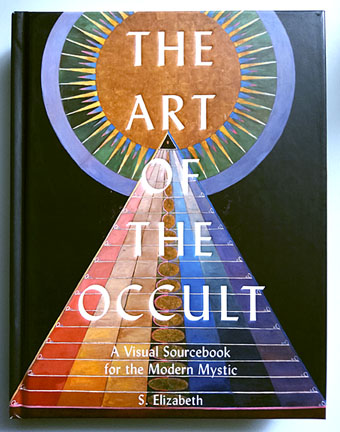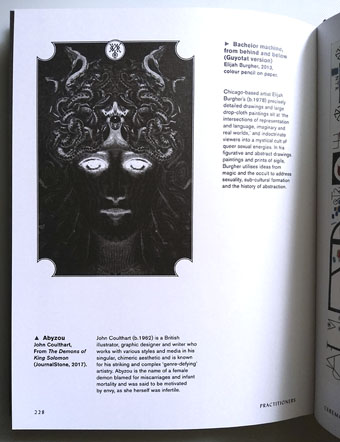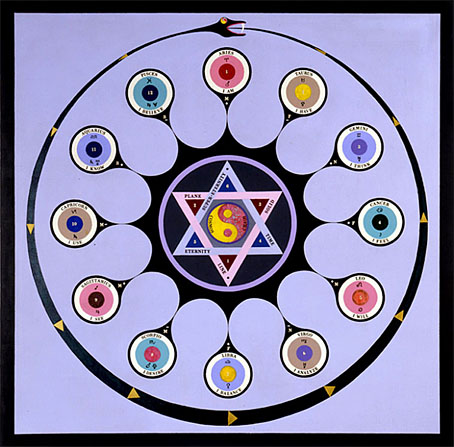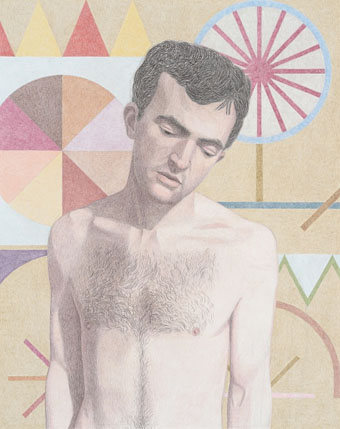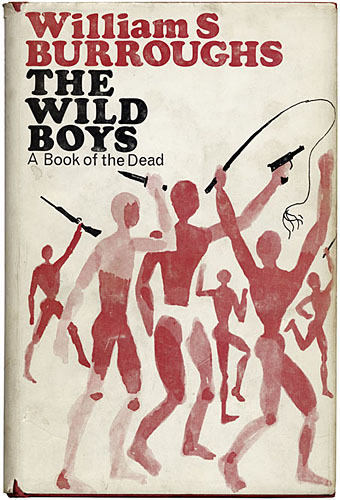
Eden Flag with Solar-Anal Emblems and Hexes (2017) by Elijah Burgher.
• A note for regular readers that I’ll be in London for a couple of days next week, so the weekend post may be delayed by a day, if it arrives at all. I’ll be attending this event at The Century Club, Shaftsbury Avenue, a talk about The Moon and Serpent Bumper Book of Magic which will be published here and in the USA a few days from now. I’m told that copies of the book will be on sale if anyone wishes me to sign a copy.
• “Published two years before André Breton’s Manifeste du surréalisme (1924), which delineated the contours of the capital-S Surrealism movement, Les Malheurs represents a proto-Surrealist experiment par excellence.” Daisy Sainsbury on Les Malheurs des immortels (1922) by Paul Éluard and Max Ernst.
• “It has been two decades since Japan’s tidying boom began, and the nation remains as cluttered as ever. I know this because I live here.” Matt Alt in a long read exploring the Japanese cultivation of clutter. Don’t be shamed by minimalist interiors.
…with the Bumper Book, we wanted to present what we hope are lucid, coherent and joined-up ideas on how and why the concept of magic originated and developed over the millennia, a theoretical basis for how it might conceivably work along with suggestions as to how it might practically be employed—and, perhaps most radically, a social reason for magic’s existence as a means of transforming and improving both our individual worlds, and the greater human world of which we are components. And we wanted to deliver this in a way that reflected the colourful, psychedelic, profound and sometimes very funny nature of the magical experience itself. That, we felt, would be the biggest and most useful rabbit to pull out of the near-infinite top hat that we believe magic to be.
Alan Moore talking to Rob Salkowitz about the Moon and Serpent Bumper Book of Magic
• “When it comes to pure cinematic terror The Texas Chain Saw Massacre has no equal,” says Mat Colegate. I’d avoid being quite so definitive but it’s a film I’d put in a list of my favourite cinematic horrors.
• At Smithsonian Magazine: See 15 winning images from the Wildlife Photographer of the Year contest.
• At The Quietus: Lara Rix-Martin on the heavy existentialism of Soviet science fiction. Previously: Zone music.
• New music: Decimation Of I by Meemo Comma.
• Steven Heller’s font of the month is Exentrica.
• Hex (1971) by Gil Mellé | Hex (1978) by Jon Hassell | Hexden Channel (2012) by Pye Corner Audio

